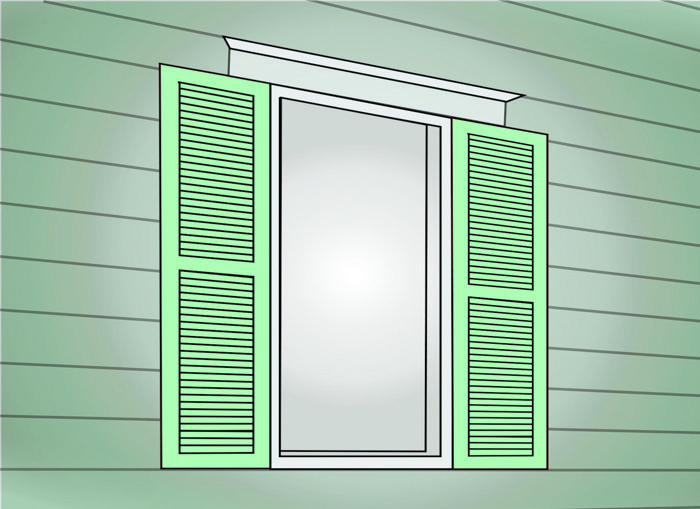I am interested in adding some wooden exterior shutters to my historic house. I've haven't decided whether I want them to be merely decorative or fully functional but I would like them to match the style of my house. What are some of my options?
"For exterior shutters, what I use is Western red cedar," says Doug Chronister, owner of American Heritage Shutters, which specializes in interior and exterior custom-made shutters. "I've found it to be most resilient to humidity and moisture levels, all the things that happen in this part of the country. They stand up much better than any other product I've ever used in all my years in business."
He explains the shutters can be ordered as raw materials, primed to be painted, or primed and painted.
Regarding the size of the shutters, the traditional rule for rectangular windows is that the shutter should be half the width of the window.
Before buying shutters, would-be buyers need to familiarize themselves with the different styles available including louvered, raised-panel, a combination of those two, and board and batten, Chronister says.
There's also the less-common bi-fold and Bahama or Bermuda shutter, most often found in coastal areas.
"A Bahama or Bermuda shutter hinges from the top of the window, angles out about 25 or 30 degrees, and has little telescoping legs that hold it out at the bottom and it can be pulled down to cover the complete opening.
"In this part of the country, Bermuda shutters are chosen more for their appearance rather than their function. But down in coastal parts of the country, they can let those arms in, close the shutter, and cover the whole window during storms," Chronister says.
For those desiring shutters but lacking enough room between the window and the side of their houses, the unconventional Bermuda style of shutters are an option. This type of shutter is usually recommended for houses without many front facing windows.
For the best appearance, homeowners with arch-topped windows should have the tops of the shutters designed to match the windows.
When it comes to choosing a shutter style, he says it comes down to the homeowner's personal preference.
"For a [Queen Anne] house, they should probably use a louvered shutter, while for a 1920s bungalow, either raised panel or louvered one would be appropriate," he says.
For a 1930s or 1940s Cape Cod style house, he suggests a louvered shutter. Louvered, raised panel, or board and batten would be appropriate on 1950s or 1960s ranch-style or contemporary homes.
"Of all the shutter styles, the louvered one is the most popular," Chronister says.
When it comes to choosing a color, he suggests one that complements the house's siding and its roof.
"You want to make it a smooth transition," he says. "Too many colors complicates it and you want to keep it clean, neat and simple."
When choosing color, homeowners should decide what type of look is being sought. While dark shutters on a lighter house are often the more popular choice, light-hued shutters on a light-colored house can offer a more subdued appearance.
In closing, Chronister points out that shutters can be functional with hinges allowing them to open and close or serve solely as decoration.
"I install a lot more of those which are just attached to the wall and not functional," he says.
Do you have a decorating or remodeling question? Send your question to Linda S. Haymes, Arkansas Democrat-Gazette, P.O. Box 2221, Little Rock, Ark. 72203 or email:
lhaymes@arkansasonline.com
HomeStyle on 07/23/2016
